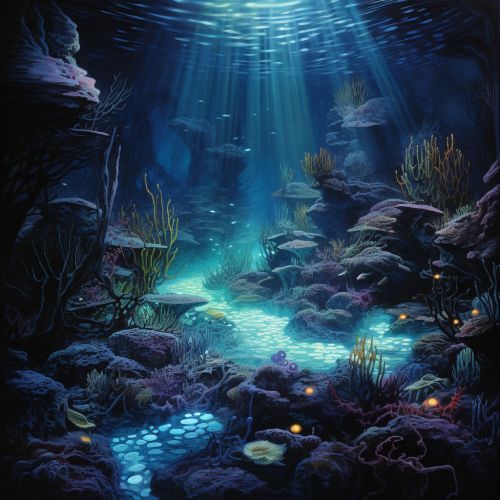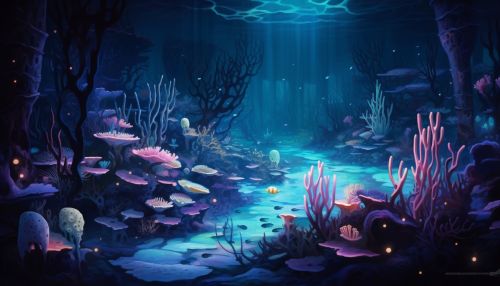Symbiotic Relationships in Deep Ocean Ecosystems
Introduction
Deep ocean ecosystems, also known as abyssal zones, are among the most mysterious and least explored regions on Earth. These ecosystems are characterized by extreme conditions, including high pressure, low temperatures, and complete darkness. Despite these harsh conditions, a diverse array of organisms thrive, many of which engage in complex symbiotic relationships. These relationships, often involving mutualistic or commensalistic interactions, are crucial for survival in the deep sea's challenging environment.


Symbiosis in Deep Ocean Ecosystems
Symbiosis is a biological interaction between two different organisms, often benefiting at least one of the participants. In deep ocean ecosystems, symbiotic relationships are particularly prevalent due to the scarcity of resources and the need for organisms to adapt to extreme conditions.
Mutualistic Relationships
Mutualistic relationships are a type of symbiosis where both organisms benefit. In the deep sea, mutualistic relationships often involve bioluminescent bacteria and deep-sea creatures. For instance, the anglerfish has a mutualistic relationship with bioluminescent bacteria, which live in a specialized organ called the esca. The bacteria benefit from a protected environment and nutrients provided by the anglerfish, while the anglerfish uses the bacteria's light to lure prey.
Commensalistic Relationships
Commensalistic relationships are another form of symbiosis where one organism benefits, and the other is neither harmed nor benefited. An example in deep ocean ecosystems is the relationship between whale falls and various scavenger species. When a whale dies and sinks to the ocean floor, it provides a massive influx of resources in the form of its decaying body. Various organisms, including hagfish, sleeper sharks, and a variety of invertebrates, benefit from this sudden food source, while the dead whale is unaffected.
Adaptations for Symbiosis in the Deep Sea
Organisms in deep ocean ecosystems have developed a range of adaptations to facilitate symbiotic relationships. These adaptations often involve physical or behavioral changes that enable the organisms to maximize the benefits of their symbiotic partnerships.
Physical Adaptations
Physical adaptations for symbiosis in the deep sea include specialized structures such as the anglerfish's esca, which houses bioluminescent bacteria. Other physical adaptations include the development of large, sensitive eyes in deep-sea creatures such as the giant squid, which allow them to detect the bioluminescent signals of potential prey or mates.
Behavioral Adaptations
Behavioral adaptations for symbiosis in the deep sea include the use of bioluminescent signals for communication. Many deep-sea creatures, such as the vampire squid, use bioluminescent displays to attract mates, deter predators, or lure prey. These behaviors are often facilitated by symbiotic relationships with bioluminescent bacteria.
Impact of Symbiotic Relationships on Deep Ocean Ecosystems
Symbiotic relationships play a crucial role in shaping deep ocean ecosystems. They facilitate nutrient cycling, contribute to biodiversity, and enable organisms to survive in an environment where resources are scarce and conditions are extreme.
Nutrient Cycling
Symbiotic relationships, particularly those involving decomposers and scavengers, play a vital role in nutrient cycling in deep ocean ecosystems. For instance, the scavengers that feed on whale falls help to recycle nutrients back into the ecosystem, supporting the growth of other organisms.
Biodiversity
Symbiotic relationships also contribute to the biodiversity of deep ocean ecosystems. The unique adaptations that organisms develop to engage in symbiosis often lead to the evolution of new species. For instance, the diverse array of bioluminescent bacteria found in the deep sea is largely a result of their symbiotic relationships with various deep-sea creatures.
Conclusion
Symbiotic relationships in deep ocean ecosystems are a fascinating area of study, offering insights into the remarkable adaptations and survival strategies of organisms in one of the planet's most extreme environments. These relationships are crucial for the functioning of deep ocean ecosystems, driving nutrient cycling, contributing to biodiversity, and enabling life to thrive in the deep sea's challenging conditions.
